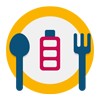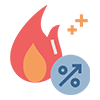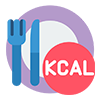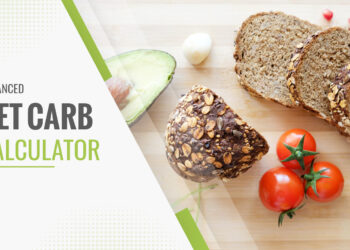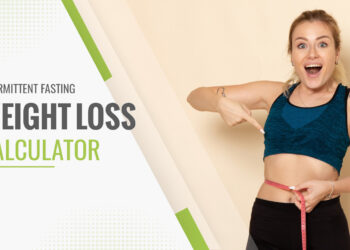It has never been easier to achieve your ideal physique due to the convenience of simple calculators which require little of your time.
“You have goals” and the Calorie Calculator has answers… no, really, all you have to do is type in some information about yourself, along with your goals and the calculator will give you all the information you need to make it happen (As far as how many calories you need).
It’s really a simple process (Although it may seem complicated) but that’s why the calculator was designed for your convenience. Whether you want to lose, gain, or maintain your current weight, the number of calories you both consume and burn will determine how your body looks.
It’s important to be strategic about achieving whatever it is you want to achieve, so don’t think changing your body composition is any different. There are certain caloric numbers we must hit to change the way we look.
Consider making it easy on yourself by utilizing a fantastic tool like the “Calorie Calculator”…
How Does the Calorie Calculator Work?
The following requirements which are “default” for the calorie calculator are necessary for determining your Basal Metabolic Rate. This is how many calories you need when at rest and for your body to function normally. (1)
Level Up Your Fitness: Join our 💪 strong community in Fitness Volt Newsletter. Get daily inspiration, expert-backed workouts, nutrition tips, the latest in strength sports, and the support you need to reach your goals. Subscribe for free!
- Height
- Weight
- Age Activity
The following factors will determine how many calories are necessary to reach your desired goal weight. The calculator will take your Basal Metabolic Rate and base your daily caloric requirements from these factors.
- Goal Weight
- Workouts per week
- Your goal
- Body fat
- Waist
After you provide your physical information, you’ll select one of the following Basal Metabolic Rate (BMR) formulas.
So How Do These BMR Formulas Differ?
Below are BMR formulas and the calculations necessary for calculating your final numbers and percentages.
Mifflin-St Jeor Formula
For men: 10 x weight (kg) + 6.25 x height (cm) – 5 x age (y) + 5
For Women: 10 x weight (kg) + 6.25 x height (cm) – 5 x age (y) – 161
Harris-Benedict Formula
Men: 66.5 + (13.75 X weight in kg) + (5.003 X height in cm) – (6.775 X age in
years)
Women: 655.1 + (9.563 X weight in kg) + (1.85 X height in cm) – (4.676 X
age in years)
Katch-Macardle Formula
BMR = 370 + (21.6 x Lean Body Mass (kg) )
Lean Body Mass = (Weight (kg) x (100-(Body Fat)))/100
Cunningham Formula
BMR = 500 + (22 x LBM) – LBM = lean body mass in Kg
The following BMR formulas are pretty self explanatory.
Average – Average BMR based on your basic information like gender and age
Simple multiplier – A simple and basic calculation which takes bodyweight and multiplies by a simple number (10, 11 and 12 are a pretty standard number for the simple multipliers).
So for example, if you weigh 165, you’d multiply 165 x 10 which equals 1,650 kcals.
Custom – The option to customize your calculations
Then you’ll calculate your Total Daily Energy Expenditure (TDEE) which will show your numbers and percentages for the following:
BMR – Basal Metabolic Rate (Calories required to keep your body functioning at rest)
TDEE – Total Energy Expenditure (Total calories your body uses per day for all activities, try our TDEE Calculator here.)
LBM – Lean Body Mass (All body mass except for fat mass).
FBM – Fat Body Mass (Percentage of body fat your body contains)
BMI – Body Mass Index (Measure of body fat based on height, weight, and gender)
Waist to Height (Divide waist size by height and if the waist measurement is less than half your height, your chances of developing an obesity-related disease are less likely) (2)
MFM – Maximum Fat Metabolism (Amount of fat calories burned)
MRDC – Minimum Recommended Daily Calories (Minimum daily calories you need to reach your goal)
Workout Calories (Calories burned during a workout)
Rest Calories (Calories required when at rest)
Weeks To Goal – Number of weeks which are necessary to reach your final weight
Final Weight
Obesity Class – Weight range (Underweight, normal, obese etc.)
The important information you’ll get from these numbers will determine your starting point. It’s difficult to try and lose weight if you’re unaware of how many calories you need to be taking in when considering your activity levels and factors like age.
Which Method is Best?
There’s no method that is necessarily better for every aspect of calculating your caloric details, however, the Mifflin-St Jeor method is just fine for getting a good average for percentages and is even recommended. (2)
It’s a choice mostly up to the individual.
Factors Which Contribute to Your TDEE
Really anything from breathing to moving contributes to your Total Daily Energy Expenditure. However, strength training and cardio really increase your TDEE which is why exercise is great for weight loss. You can still lose weight however if you consume fewer calories than your body expends regardless of aerobic activity.
How Does the Calculator Figure Out How Many Calories You Need?
Well, based on your Basal Metabolic rate and other important factors which influence your TDEE, a certain amount of calories is required, to lose, gain, or maintain your weight. (3)
The calculator will take into account your basal metabolic rate and your lifestyle in combination with your goals, and this is how you’ll get accurate caloric recommendations.
What about the Nutritional Aspect of Reaching a Certain Weight?
The calculator doesn’t tell you what foods to eat because your total daily caloric requirement determines whether you lose, gain, or maintain weight. It’s not a macronutrient calculator which will break down the amount of protein, carbohydrates, and fats you need but there are other calculators which do break down the specific ingredients in the types of foods you select…
Myfitnesspal is one which comes to mind because you can type in the foods you consume, and track your calories to reach your fitness goals.
But, for the average person who just wants a caloric goal, the calorie calculator is just fine. Nutritional choices will be up to the individual based on their goals as well. However, good quality, non-processed foods will be important for your health and results. (4)
Calories Can Manipulate Your Lean Mass and Fat Mass
This is a simple concept… if you eat too many calories you’ll have a high percentage of fat body mass. If you eat Just enough to where you’re keeping off the fat mass, you’ll have an improved lean body mass percentage.
Resistance training obviously increases lean body mass significantly and more muscle burns extra calories. So consider lifting weights if you desire to have a better lean body mass to fat body mass ratio. (5)
Knowing Your Body Gives You An Advantage
It really does… sure you can just wing it but people who are inexperienced at gauging their progress will a lot of times fail.
We have so many useful calculators at our disposal; you’d be crazy to not utilize them for your own benefit. So many people struggle to get to their ideal weight because they are just spinning their wheels.
Overeating and not exercising enough is a good example of stagnant weight loss, and under eating combined with too much exercise can be counterproductive to gaining weight. You have to know how much energy your body expends per day with your lifestyle to make necessary changes to your diet and exercise habits.
Use the “Calorie Calculator” to make your life easier because you don’t have time to waste when it comes to getting in your best shape.



